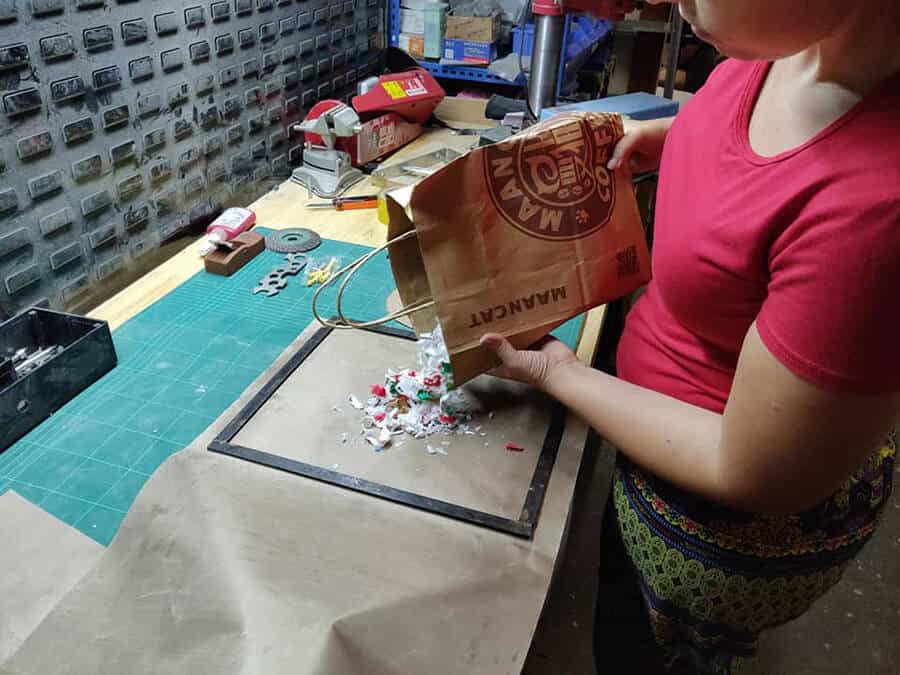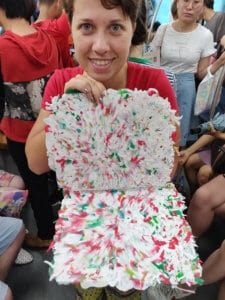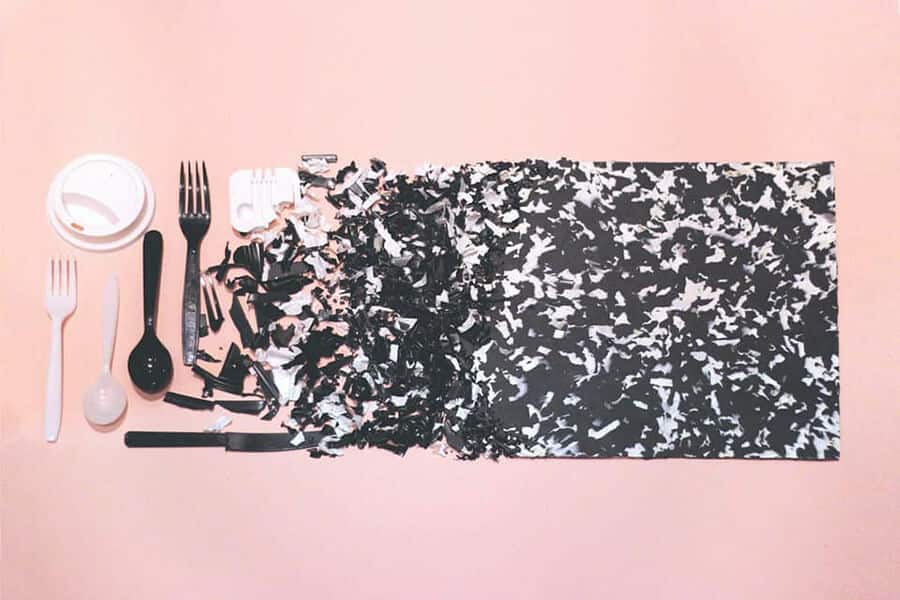Precious Plastic is a community that understands that single-use plastic is a huge issue in today’s world. Reports predict that by 2050, the plastic in the ocean will outweigh the fish. This is not only because plastic products such as bottles, straws, and bags are being created at exponential levels. Animals are dying because of plastic pollution as a result. Many people try to reduce their use of plastic and even go the zero-waste route. The Precious Plastic community believes that plastic is a precious resource and should be treated as such.
The Precious Plastic Community
Dave Hakkens began working on Precious Plastic as part of his studies at the Design Academy in Eindhoven, back in 2012. That is where he invented the first version of a machine that shreds and repurposes plastic. In 2013, he released these plans globally, and several people around the world managed to replicate them. Within a few years, communities began to form all over the world as like-minded people pursued the common goal of tackling the plastic problem.

While it takes an engineer or someone with incredible mechanical design skills to put together the machines, Precious Plastic communities require people with a wide variety of capabilities. The big components are collection points, community centers, machine shops, and a shredder workspace. The workspaces where new plastic is created can focus on extrusion, sheetpress, injection, or a mix of these.
What sets this community apart is that all the resources are available for free. They also have a unique attitude about plastic. They see the discarded plastic lying around as a resource, not waste. It is a material with great potential, left intact all around the world. If processed correctly, it can become something new and valuable. The best part is that this resource can become a source of income or an educational tool for the community, while at the same time making sure it doesn’t pollute the environment.
How to Join
The Precious Plastic community has grown quickly and spread across all corners of the globe. Today there are over 80,000 people in over 1,000 locations working together. These individuals share the same passion and vision for a world with less plastic waste. The most active way to join the movement is to find an existing community or start your own. Anyone can start a community with the free resources provided on Precious Plastic’s website.

The starter kits are designed to be easy to follow, with universal parts that can be purchased at a simple local hardware store. More recently they have also started selling kits that include all the necessary components. These are much pricier but ensure a smooth process. The Bricks Starterkit, for example, costs 12,800 € and includes one week of onsite set-up and training by two staff members. This cost is not meant to be for an individual but rather a community.
Many Precious Plastic workshops join already existing shared workspaces and charge members monthly fees to cover the costs. The initial costs are a big reason why starting a new community is an ambitious project. It requires not only a space and money but also people to maintain the machines and collect the raw material: plastic! That’s why most people join an existing community to begin with.
Learning about Plastic
The first thing that new members or anyone who is interested does at Precious Plastic is learn about plastic. The more experienced members create presentations that are also available online. These explain how plastic is created, outline the environmental aspects, and teach people to differentiate between the different types of plastic.
Most single-use plastic is labeled based on how it can be recycled. Rating numbers, ranging from 1 to 7, offer vital information on what the plastic is made from and how it reacts to hot temperatures. If there is no label, there are still ways to figure out how to identify it. Using touch, smell, a small flame or even water can help you to determine what type of plastic you are handling. Understanding what plastics are used for certain products and being able to identify discarded plastic is key to re-using it.
What Can You Create at a Precious Plastic Workshop
Recycling plastic is a concept that everyone can get behind. But what can a group of individuals actually create with a few dingy-looking machines built from scrap yard materials? More than you could possibly imagine! The previously mentioned starter kit creates actual bricks that can be used to build structures. Other machines can build beams or sheets of plastic that can then be shaped and altered as needed. There are also machines that inject plastic into moulds – so you can create anything that you have a mould for.
https://www.instagram.com/p/BppIkafHgew/
Some precious plastic workshops fund themselves through Precious Plastic stores. There is a big online store that has a variety of products, raw materials, machines, moulds, and extras. People create common household items, jewelry, and much more! The possibilities are limitless as long as you have enough raw materials, access to the machines, and a wild imagination.
Getting the Community Involved
A big part of Precious Plastic is helping, educating, and involving the entire community. The first step is obviously educating as many people as possible about the harm that plastic does to the environment. Many people are simply unaware and don’t realize the impact of their daily actions. The attitude that “It’s just one bag/bottle/straw” is what got our civilization of 7.5 billion in this situation in the first place. Educating individuals, however, is only half the battle.
https://www.instagram.com/p/B2RkudQHNHS/
Businesses that create, use, and dispose of plastic are the biggest problem. They are the ones that can use greener materials, eliminate unnecessary packaging, and also make sure that their waste is properly recycled. That’s why Precious Plastic communities contact bigger businesses and find ways to collect their plastic. Plogging or picking up waste while jogging/exercising is helpful too, of course.
The whole point is to prevent plastic from polluting the environment, although to create larger items, a high volume of plastic is necessary. Intercepting plastic waste at the source is a great way to gather resources, make sure it is recycled or reused properly as well as educate the disposers. The goal is to stop new plastic from being created and re-using every plastic particle that already exists to its maximum potential.
How Can You Help?
The best way to help Precious Plastic is to become a member. You can help the most if you are participating, learning, and seeing the process first-hand. Brainiacs and engineers can help build and maintain the machines as well as help develop newer models. Creative people can share their ideas and think of new ways that the plastic can be used. Social butterflies can help spread the message, build communities, and educate others about the cause.
Learn more about Precious Plastic on their official website, Facebook page, Instagram, YouTube and Patreon. However you choose to contribute or get involved, the passion behind Precious Plastic is absolutely contagious.
Title Photo: Precious Plastic
Photos: From Personal Archive of the Author
More articles on the topic:
The Comeback Of Green Origami – From Plastic Bin Bags To Newspapers
Plogging: An Eco-Friendly Sport that Combines Exercise and Trash Pick-Up
Support us!
All your donations will be used to pay the magazine’s journalists and to support the ongoing costs of maintaining the site.
Share this post
Interested in co-operating with us?
We are open to co-operation from writers and businesses alike. You can reach us on our email at cooperations@youthtimemag.com/magazine@youthtimemag.com and we will get back to you as quick as we can.










